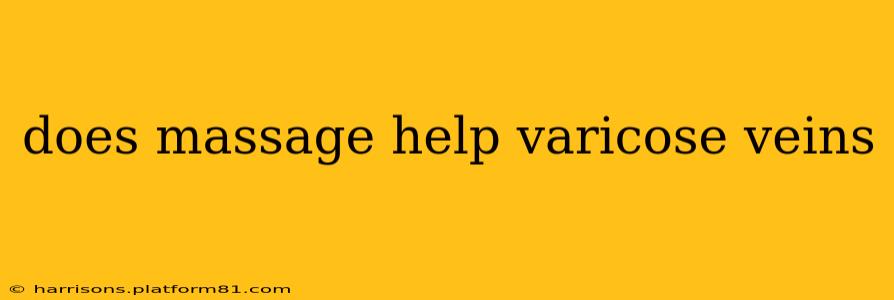Varicose veins, those unsightly and sometimes painful bulging veins, affect millions. While massage therapy isn't a cure, it can offer some relief from associated symptoms. Let's delve into the potential benefits and limitations of massage for varicose veins.
Can Massage Therapy Improve the Appearance of Varicose Veins?
Massage therapy, particularly lymphatic drainage massage, aims to stimulate blood flow and reduce fluid buildup. This can potentially improve the appearance of varicose veins by reducing swelling and inflammation around the affected areas. However, it's crucial to understand that massage will not eliminate the veins themselves. The visible improvement is often temporary and depends on the severity of the condition.
Does Massage Reduce Pain and Discomfort Associated with Varicose Veins?
Many individuals experience pain, aching, throbbing, or cramping in their legs due to varicose veins. Gentle massage can help alleviate this discomfort by improving circulation and reducing muscle tension. Techniques focusing on the surrounding muscles can promote relaxation and reduce pressure on the affected veins. However, aggressive massage is strongly discouraged, as it could worsen the condition.
What Types of Massage Are Best for Varicose Veins?
Specific massage modalities are better suited for managing varicose vein symptoms than others. These include:
- Lymphatic Drainage Massage: This gentle technique aims to stimulate the lymphatic system, helping to reduce swelling and improve fluid circulation.
- Manual Lymph Drainage (MLD): Similar to lymphatic drainage massage, MLD uses very light, rhythmic strokes to encourage lymphatic flow.
Avoid deep tissue massage or any technique that involves forceful manipulation of the affected veins, as this can cause damage and exacerbate the problem.
Can Massage Prevent Varicose Veins?
While massage can help manage existing varicose veins, it's not a preventative measure. The development of varicose veins is influenced by factors like genetics, age, prolonged standing or sitting, pregnancy, and obesity. Maintaining a healthy lifestyle, including regular exercise, a balanced diet, and avoiding prolonged periods of standing or sitting, is crucial for prevention.
Are There Any Risks Associated with Massage Therapy for Varicose Veins?
Although generally safe, massage therapy for varicose veins does carry some potential risks:
- Increased Inflammation: Improper massage techniques can exacerbate inflammation and worsen the condition.
- Blood Clots: Deep tissue massage is not recommended as it might dislodge blood clots in severe cases. Always consult your doctor before undergoing massage if you suspect a blood clot.
- Skin Damage: If you have very fragile skin or open sores near the varicose veins, massage may cause further irritation.
When Should I Consult a Doctor About My Varicose Veins?
It's essential to consult a doctor or phlebologist (vein specialist) if you experience:
- Severe pain or swelling
- Skin discoloration or changes in skin texture around the affected veins
- Leg ulcers or open sores
- Bleeding from the veins
- Signs of blood clots
What Other Treatments Are Available for Varicose Veins?
Besides massage therapy, various medical treatments are available to manage varicose veins. These can include:
- Compression stockings: Help improve blood circulation and reduce swelling.
- Sclerotherapy: Involves injecting a solution into the veins to close them off.
- Laser ablation: Uses laser energy to seal off the affected veins.
- Endovenous ablation: Uses heat to close off the veins.
- Surgical removal (phlebectomy): A surgical procedure to remove varicose veins.
Your doctor can recommend the most appropriate treatment based on your individual needs and the severity of your condition. Remember, this information is for educational purposes and does not constitute medical advice. Always consult a healthcare professional before starting any new treatment.
